By sheer coincidence, while we had the Panasonic Lumix GH5 camera body and Leica DG 100-400mm telephoto zoom lens on loan for review, one of our review team was heading to Shetland for his annual autumn migration “pilgrimage”. We asked if he’d like to take the camera along and give us his thoughts from a travelling birder’s perspective… here’s how he got on.
Read our in-depth review of the Lumix GH5 for wildlife photography here
Firstly I must state that I’m in no way a photographer, but the chance to try out the new Panasonic Lumix GH5 for Ireland’s Wildlife on a birding trip to Shetland this October was too good to pass up. I’ve tried a few bridge cameras and digital SLRs for bird photography in recent years with mixed results. Mostly, the cameras have been too slow, both for focusing and also in between taking shots. However, the first time I tried the Lumix in the IWHQ garden, the speed of firing was immediately very striking. With the 100-400mm zoom, it looked like it would be a great prospect but would I be able to handle it?
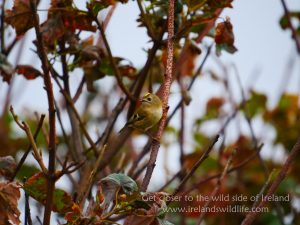
I thought I should give it a wee test before heading to Shetland, so I took it birding round Galley Head a few days beforehand. There weren’t too many birds around, but I did find a mixed flock of tits and warblers frolicking around in a bush so spent a while trying to get some in focus shots. This was a good test for the autofocus, as birds were jumping around, hiding behind twigs, branches and leaves and generally being awkward. However, I did manage to fluke a couple of in-focus keepers, in the form of a goldcrest and a dunnock. After getting these two, I was reasonably confident of bagging a few crackers in the Northern Isles.
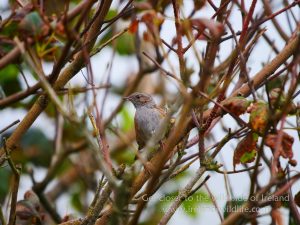
Arriving at Sumburgh Head at the south end of the Shetland Isles in gale force south-easterly winds and torrential rain wasn’t the best start to the trip, and with the iffy conditions generally prevailing over the next few days, I didn’t get a huge amount of time to try out the camera. However, the little time I did get to use it, was quite rewarding.
As I began to get used to the camera, there were several features that struck me as a good idea. For instance, to change modes on the main function dial you have to depress a small button in the centre, which unlocks the dial. Twist the dial to the setting you want, and then depress the central button again. The function dial is now locked to the setting you selected, so no more accidentally switching modes when removing the camera from its case in a hurry – clever!
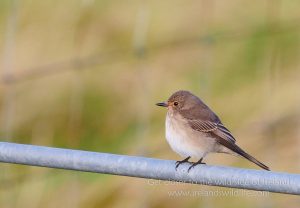
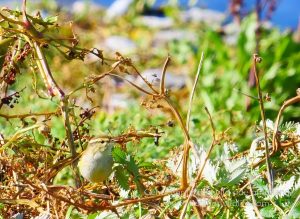
On the downside, there seem to be buttons everywhere on the camera body, even though some of them don’t even look like buttons. One of these was close to the base of the lens mount, on the camera body, just where my little finger would naturally rest. I frequently accidentally pressed this button, which would cause messages to frequently pop up in the viewfinder, although I didn’t understand what they meant. It may have been this button that suddenly put a strange blue edging on the subject matter, which was a bit disconcerting and not very convenient, especially when trying to photograph a yellow-browed warbler flitting around in some dock stems. Switching the camera off and on again seemed to help though.
One of the drawbacks of the camera is that it has a digital viewfinder, as opposed to an optical one. Generally I found this fairly easy to use, although in some lights it was hard to follow birds through vegetation.
The autofocus was another area of operation that I had a few problems with, and in fairness, these were probably mostly down to user incompetence, and not a very clear explanation in the online manual. However, if I’d had more time to check the various options out, I think I would have understood things better.
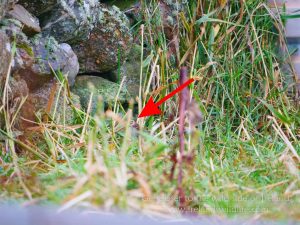
Generally, the autofocus was pretty good at picking out the subject, although there were times when it struggled, for example when trying to focus on a bird sitting on a wire with a grass background. I had tried to set a central focus point to try to avoid this scenario prior to the trip, but I may have done something incorrectly. At one point the autofocus did try to focus on a bird I didn’t even know was in view. I was blundering along, following a reed warbler but failing to get it in focus, when a little bunting flew off calling from the same area. Checking my shots later, I noticed an almost in focus little bunting in the weeds behind the blurred reed warbler – the camera had “seen” what I’d failed to notice, and had even managed a “record shot”!
Calvin had set up the back button focus on the camera prior to the trip so that the button on the back focuses the image, and then the shutter button takes the photo. I have this set up on my own camera so am well used to it. There’s a focus joystick beside the back focus button which allows you to move the focus point around on the viewfinder – another feature I only used accidentally! I did find reaching the back button focus was a bit of a stretch, and with the focus joystick right next door, it wasn’t the easiest to find without looking. Although this would probably improve with greater use and familiarity, if you’ve got small hands, you might find it difficult to go for this setup.
We had to twitch a couple of mega-rarities whilst on Shetland. At one of these, a Pallas’s Grasshopper Warbler, a notoriously skulky species, had been found in a small iris bed. Although it wasn’t actually raining at the time, I left the lumix in the car, as I couldn’t face the stress of trying to take a photo when the views were only ever likely to be brief and in-flight. There was a bewildering array of cameras on display though, from small bridge zooms right up to massive 800mm lenses in full camo décor. These days, most birders come armed with a camera as well as binoculars, and many had obviously spent a lot of money to get one.
Fortunately, the second mega rarity proved a bit more obliging, although views were always fairly distant. The seventh Shetland record of Upland Sandpiper, a North American species of wader, also drew a fair-sized crowd of twitchers, and again most had a camera trained in its direction. I was quite pleased to note that, although fairly grainy, my shots turned out quite well in comparison to my fellow twitchy chums. Definitely good enough record shots to squeeze a bit of an “oooof” out of folk when circulated later via my phone!
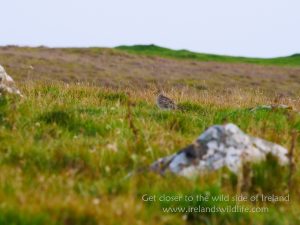
All in all, despite the generally inclement weather, I found the Lumix GH5 to be a very good camera for bird photography, and I think with more time, and better conditions, (and a bit of luck!) it would be possible to get some very good images. The camera and lens were very fast and very responsive, and while I wasn’t entirely sure how the autofocus worked, I did manage to get a few very sharp images (at least by my standards!). The digital viewfinder proved adequate, and although there are myriad buttons, and a slightly bewildering array of settings, with a bit of practice I think any birder would be very pleased with the results that it is possible to get with this camera and lens.
| | |
Read our in-depth review of the Lumix GH5 for wildlife photography here









